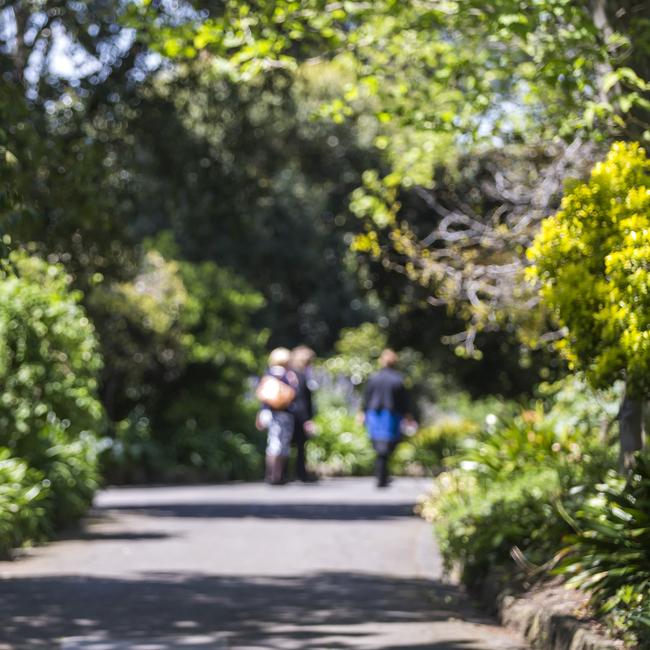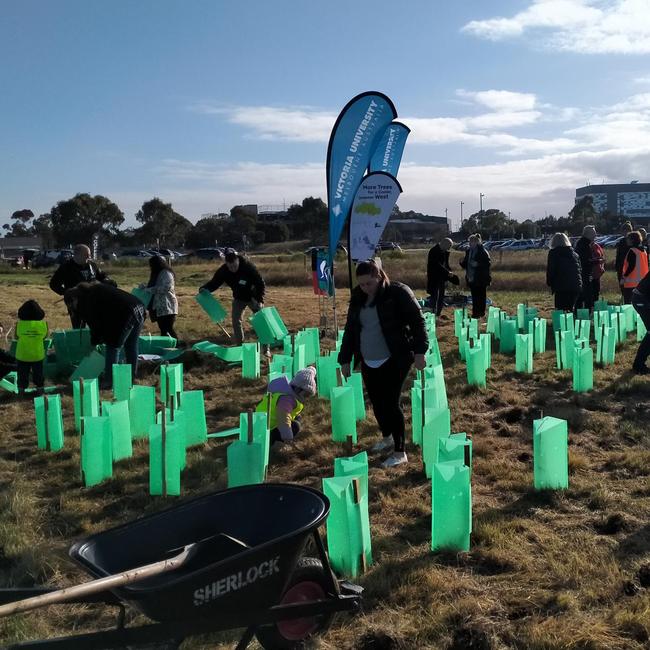Melbourne’s west boosted by thousands of new trees for cooler, greener living
Melbourne’s west is receiving a green makeover that researchers say will have wide-ranging beneficial impacts. Find out what they are.
West
Don't miss out on the headlines from West. Followed categories will be added to My News.
A silent killer continues to plague Melbourne’s west but researchers say a plan to plant half a million trees around schools, in parks and along residential streets could save lives.
The western region still has the lowest tree canopy cover in Melbourne, with urban development contributing to the loss of trees and vegetation.
In 2018 Melbourne’s western region had only 5.5 per cent urban tree cover compared to 25.9 per cent in the east, 17.4 per cent in the inner south east and 15.2 per cent in the south.

Researchers remain concerned about the ‘urban heat island effect’ which increases hyperlocal temperatures and impacts the health and wellbeing of both humans and animals.
The Victorian Council of Social Services warned in an environmental infrastructure inquiry that Melbourne had the lowest proportion of green cover of the Australian capitals.
Further, they said low-income households were disproportionately located in the least green areas and that Victorians who would benefit most from green spaces were most likely to miss out.
Victoria University green infrastructure researcher, Dr Nittin Muttil, said the lack of green space in the west meant hot days were hotter and there was no respite for residents, who were often disadvantaged and most at risk.

“Everyone talks about natural disasters like bushfires and floods, but urban heat is a silent killer, it never makes the news but it certainly kills more people each year,” Dr Muttil said.
“Green spaces not only reduce the mortality rate in areas and prevent poor health outcomes, but it also has significant psychological and mental health benefits too,” he said.
“As development continues and population grows in the west, nature-based solutions must be implemented to ensure there is an abundance of green and blue spaces available to the community, such as parks, gardens and lakes.”

Dr Muttil’s research with the Water Resources Research Group also showed that planting trees was the most effective and beneficial form of green infrastructure compared to other methods such as green roofs or walls.
The state government aims to plant 500,000 trees in Melbourne’s west as part of its ‘more trees for a cooler greener west’ initiative, with 192,000 already in the ground.
Environment Minister Ingrid Stitt said the initiative aimed to not only create a cooler and greener west, but also boost liveability, improve air quality and tackle climate change.
During the third stage 131,504 trees will be planted by mid-2024.
The university’s Werribee campus — where Dr Muttil is based — gained 5000 trees as part of the initiative and will receive a further 5000 in the third stage of the project.

More than 70 selected sites for the third stage stretch across Hobsons Bay, Maribyrnong, Brimbank, Melton, Moonee Valley and Wyndham local government areas.
As part of this an ‘urban forest’ will be planted in Brooklyn, with 3000 tubestock trees to be planted on under-utilised public land.
Melton state Labor MP Steve McGhie recently announced that more than 40,000 trees would be planted in Melton as part of a $2m investment in planting mature and young trees at 76 locations across the west.
Mr McGhie said trees would be planted outside schools, along trails, in parks and on residential streets to create cooler spaces for communities.

“The trees will provide more green space for residents to enjoy, increase connections with nature and improve mental and physical health,” Mr McGhie said.
“New trees throughout Melton will make the streets cooler and more accessible for local communities creating more shade and green spaces within Melton.”
nilsson.jones@news.com.au




